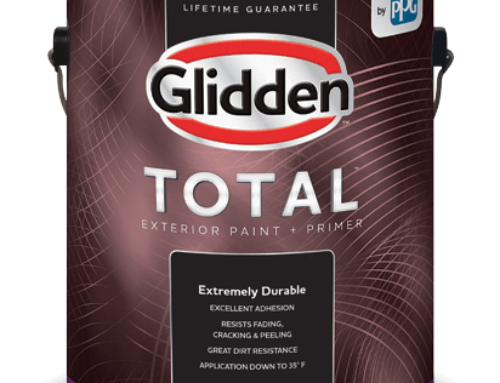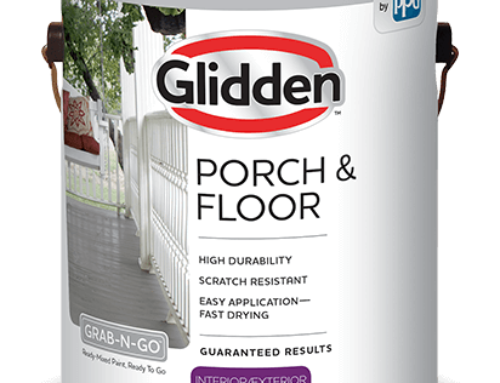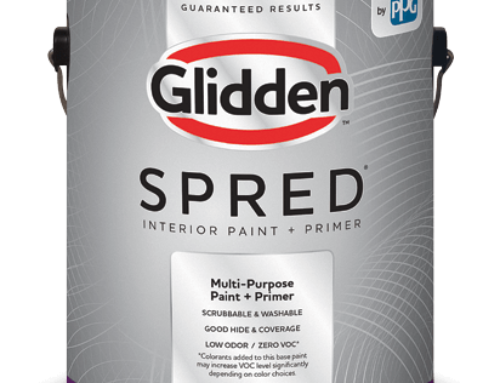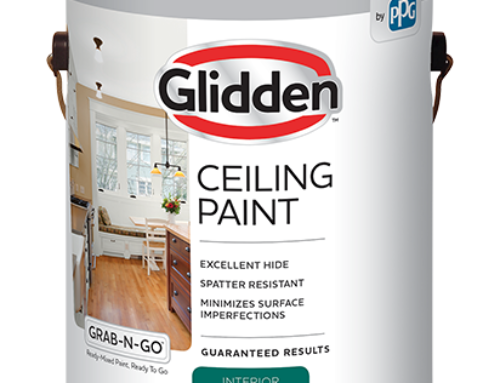Glidden® Door & Trim Paint
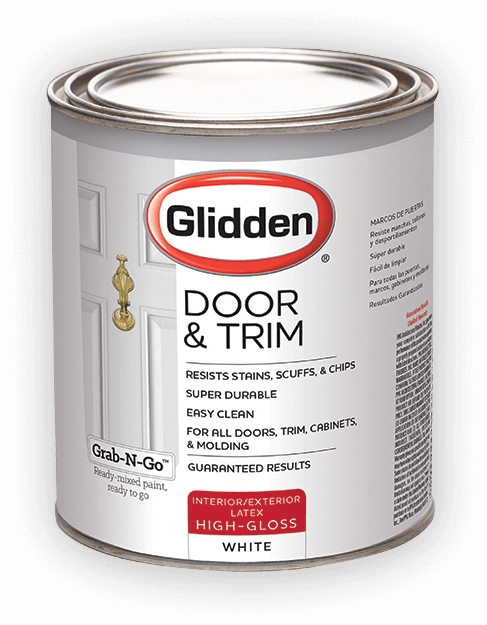
The solution for updating your home, this paint is perfect for doors, trim, cabinets, and molding, standing up to even the most active lifestyles. Available in 3 ready mix colors.
- Sheens: Gloss
- Sizes: Quart, 1 Gal
Benefits
Adhesion on wood, metal and previously coated surfaces
Homes come in all shapes, sizes and materials. Glidden can work with that.
High Gloss Finish
Stain, scuff & chip resistance
The wind can slam the door, you can shut the window, or your kids can climb the trim- it’ll still look great.
Details

Surface must be clean and dry. Remove all loose, peeling paint, dirt, grease, and any other surface contaminants. Putty all nail holes and caulk all cracks and open seams. Sand all glossy, rough and patched surfaces. Prime all bare surfaces with the appropriate primer. Some cabinet fin- ishes may not be suitable for painting. For best results test for adhesion in an inconspicuous area prior to painting.
WARNING! If you scrape, sand, or remove old paint, you may release lead dust or fumes. LEAD IS TOXIC. EXPOSURE TO LEAD DUST OR FUMES CAN CAUSE SERIOUS ILLNESS, SUCH AS BRAIN DAMAGE, ESPECIALLLY IN CHILDREN. PREGNANT WOMEN SHOULD ALSO AVOID EXPOSURE. Wear a properly fitted NIOSH-approved respirator and prevent skin contact to control lead exposure. Clean up carefully with a HEPA vacuum and a wet mop. Before you start, find out how to protect yourself and your family by contacting the USEPA National Lead Information Hotline at 1-800-424-LEAD or log on to www.epa.gov/lead. Follow these instructions to control exposure to other hazardous sub- stances that may be released during surface preparation.
Ferrous Metal: The surface must be cleaned thoroughly to remove dust, rust, and surface contaminants, and then primed.
Wood: Unpainted wood or wood in poor condition should be sanded smooth and wiped clean. Any knots or resinous areas must be sealed before painting. Countersink all nails, putty flush with surface, then prime.
Vinyl & Architectural Plastics (Composites): Vinyl and similar architectural plastics may present potential adhesion problems. A primer may be required to promote proper adhesion. Consult the manufacturer’s guidelines prior to painting. Primer and Topcoat should be spot applied, allowed to cure overnight, then evaluated for adhesion. If adhesion is good, the application may proceed. Do not paint vinyl or plastic with a color darker than the original to prevent potential warping due to heat absorption.
Stir thoroughly. When using more than one container, intermix to ensure color uniformity.
Application Method: Brushing is the preferred method of application. Dip brush into the quart can and begin brushing, applying in thin coats. Heavy application may cause product to run. Minor brush marks will self-level. If touch-up is required after the enamel has set, wait until it has dried to touch. Two coats will provide best durability, gloss and uniformity.
Application Equipment: For smooth surfaces, use a premium quality nylon/polyester blend brush. Thinning: DO NOT THIN.
Material: 50 to 90°F (10 to 32°C) Ambient: 50 to 90°F (10 to 32°C) Substrate: 50 to 90°F (10 to 32°C)
Dry time @77°F (25°C) & 50% relative humidity.
To Touch: 30 minutes
To Recoat: 1 hour minimum
To Full Cure: 30 days
Drying times listed may vary depending on temperature, humidity, film build, color, and air movement. Shelving may be put into use seven days after final coat. Doors or cabinets may be closed
forty-eight hours after final coat.
One quart (946 mL) covers approximately 75 sq. ft. (7 sq. meters) per U.S. gallon (3.78 L) on primed, smooth non-porous sur- faces.
Wet Film Thickness:4.6 – 5.3 mils
Wet Microns: 117 – 135
Dry Film Thickness: 1.8 – 2.1 mils
Dry Microns: 46-53
Coverage figures do not include loss due to surface irregularities and porosity or material loss due to application method or mixing. Some colors, drastic color changes, or porous substrates may require more than one coat to achieve a uniform finish.
Clean tools with warm, soapy water. Clean spills immediately with a damp cloth.
Wood Metal Composites
Please refer to the Product Label, Technical Data Sheet (TDS) or Safety Data Sheet (SDS) for safety and detailed application instructions.

